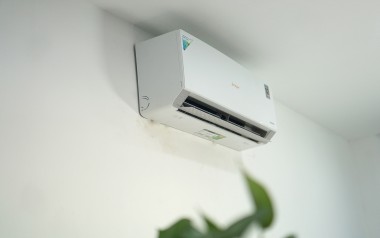
Written By Admin 22/11/2023
Portable power stations, a precursor to modern power banks, emerged as a response to the necessity for reliable off-grid power sources. The concept of portable power has undergone a remarkable transformation over the years, evolving from stationary generators to the compact and versatile power stations we know today. In the early stages, these stations were hefty and cumbersome, primarily utilized in industrial settings or for emergency backup power. However, advancements in battery technology and miniaturization spurred the development of more compact and user-friendly iterations.
 The Faraday disk was the first recorded electric generator.
The Faraday disk was the first recorded electric generator.
The journey began with the development of portable power stations, designed to provide electricity in remote locations. In the late 20th century, innovations in battery technology paved the way for smaller, more efficient power stations that could be easily transported. As mobile devices became ubiquitous, the need for on-the-go charging solutions became evident.
The first power bank was bulky and had a short battery life.
The first commercial portable power bank was developed in 2001 by a Chinese company called Pisen for the Chinese [ “7+2” Antarctic Expedition Team], who asked Pisen to provide some digital equipment for their trip. The team needed a charger that was portable and could charge their cameras and other electronic devices. Due to the extreme temperatures, normal camera batteries would be compromised in such conditions, thus the need for a portable external battery on the side. The original design was two AA batteries pieced together by a circuit! It made its public debut at the Las Vegas International Consumer Electronics Show.
Chinese "7+2" Antarctic Expedition in 2004
Enter the SMEC OPS600 Portable Power Station—an epitome of cutting-edge technology designed to meet the demands of modern-day adventurers and tech enthusiasts. With a robust 576Wh/160,000mAh capacity, the OPS600 ensures a reliable and long-lasting power source for your devices, whether you're camping in the wilderness or navigating the urban jungle. Its compact design, coupled with advanced features like multiple USB ports, AC outlets, and intelligent charging, makes it an indispensable companion for those who refuse to be tethered by traditional power constraints.
SMEC takes pride in offering not just a portable power station but a solution that aligns with the dynamic lifestyle of today. The OPS600 is not merely a device; it's a promise of uninterrupted power, empowering you to stay connected and charged whenever and wherever you go. Explore the future of portable power with SMEC—because in a world constantly on the move, your power should be, too.
The OPS600 is ready for any occasions
 Information
Tại sao bật điều hòa phải để hé cửa?
Information
Tại sao bật điều hòa phải để hé cửa?
Khi bật điều hòa tôi thường đóng cửa, sao thấy trên các hội nhóm nói phải mở cửa, thậm chí lắp quạt thông gió. (Thành Đông).
 Information
Hiện trạng và giải pháp phát triển điện mặt trời mái nhà
Information
Hiện trạng và giải pháp phát triển điện mặt trời mái nhà
Nghị quyết số 55-NQ/TW của Bộ Chính trị ngày 11/2/2020 đã khuyến khích, tạo điều kiện thuận lợi để các thành phần kinh tế, đặc biệt là kinh tế tư nhân tham gia phát triển năng lượng điện gió và điện mặt trời (ĐMT), trong đó có ĐMT mái nhà (ĐMTMN).